 Scheme Introduction
Scheme IntroductionBased on business experience and project experience accumulated over years in the field of information technology, Liandi Information provides professional information technology for users of power industry in power related inspection, configuration, development strategy, marketing, materials and other departments. On the basis of a detailed understanding of business characteristics and rich experience in cross-platform development, Liandi provides first-class information technology services to power enterprises in power generation, transmission, substation, distribution, power consumption and other fields.
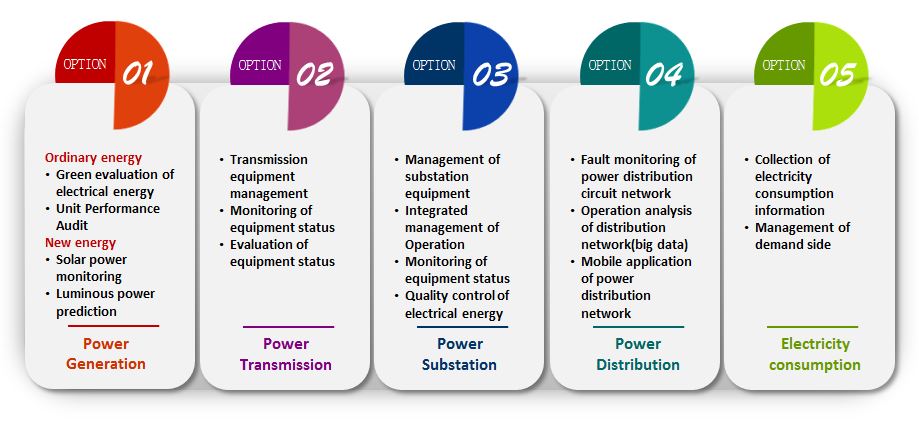
 Production Management of Equipment
Production Management of EquipmentAround the life cycle management of equipment, ensure the safety of power grid production. In addition, on the basis of equipment management and operation management, aim at improving the reliability of transmission, substation, distribution and power supply, implement safe production management business including transmission, substation and distribution. Moreover, the periodic statistics data and analysis data of the basic business modules including operation, inspection, technology improvement, technology audit, energy saving, power equipment protection management, can be automatically generated.
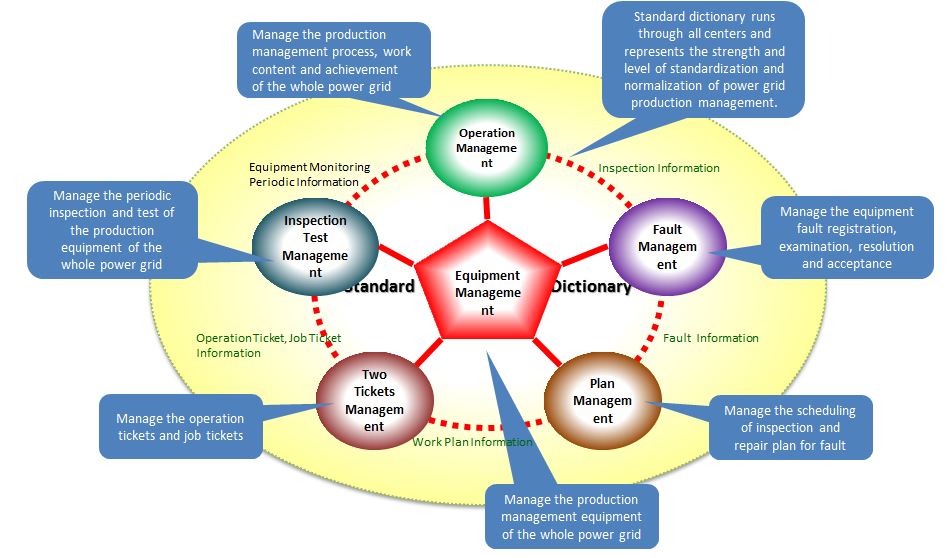
1. Equipment Asset Management: The entire power grid shall be managed in a unified way, and make management ledger for main equipment and auxiliary equipment respectively, including equipment management account and graphics management and other contents.
2. Work Plan Scheduling: Realize the management of work orders and power outage plans. Arrange the power outage plan according to the work order, and finally realize the scheduling and invoicing of the power outage plan.
3. Operation/Maintenance Management of Equipment: Conduct inspection work for equipment operation and maintenance, including equipment monitoring, fault management, work plan, two tickets management, inspection records, etc.
 Examples of Inspection and Evaluation of Equipment Status
Examples of Inspection and Evaluation of Equipment Status 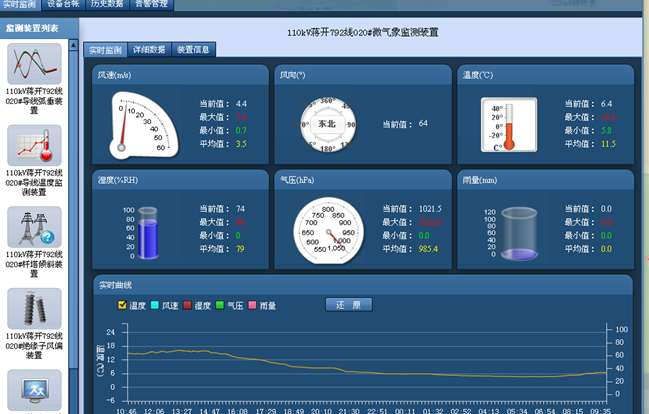 |
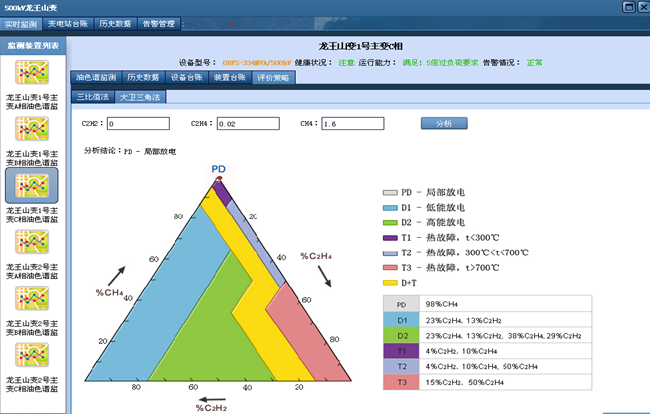 |
 Integrated Management Control of Operation/Maintenance
Integrated Management Control of Operation/Maintenance The related business data of power grid operation/maintenance are collected with unified model and different frequencies, and the data mapping between services is carried out through careful business sorting to realize the connection between services. Statistical analysis indicators can be more directly and effectively published to managers. The operation/maintenance related business can be roughly divided into four modules: transmission regulation, substation regulation, distribution regulation and technology improvement regulation.
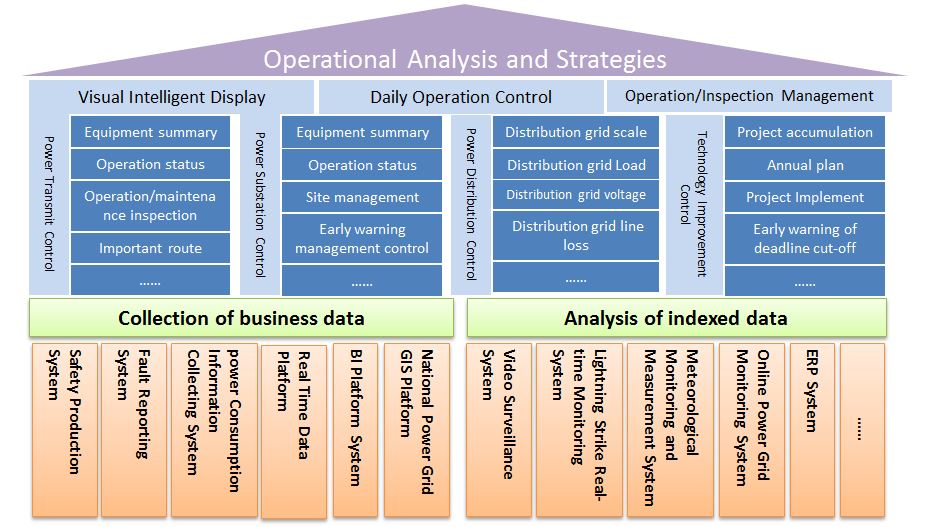
1, Transmission Regulation: The basic data of transmission equipment, monitoring information of important channels and related operation data are collected and published, and the operation information of terminal equipment and early warning information are fed back.
2, Substation Regulation: The basic data of the substation equipment and the related operation data are made statistics and the announcement, and the operation information and early warning information of each equipment in the terminal are fed back.
3, Distribution Regulation: The medium voltage equipment and low voltage equipment in distribution network are analyzed comprehensively, and the monitoring, operation, project acceptance status, conservative design drawings, work tickets and other information of the distribution network are comprehensively analyzed. At the same time, the early warning message push function of the distribution network can also be provided.
4, Technology Improvement Regulation: Based on the technical improvement module of the existing PMS system, the relevant data of the ERP system and the design platform are also utilized, and the progress of the project of the technology improvement stage is announced.
 On-line Monitoring of Electrical Energy Quality
On-line Monitoring of Electrical Energy Quality The on-line power quality monitoring system can monitor the power quality of the power grid in real time, discover the "pollution source" in real time, and formulate better countermeasures to prevent pollution. In addition, on the basis of instant release of monitoring data, the quality index of power is evaluated. It also has the function of map, which can publish comprehensive information about power quality. This system is of great significance both to the promotion of power energy quality during the power industry and to the development of social economy.
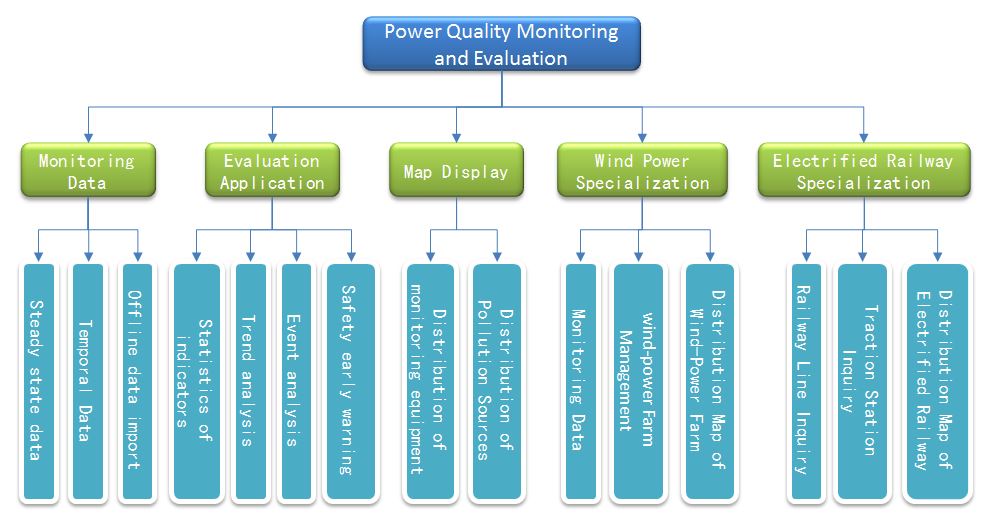
The on-line power quality monitoring system can publish data in real time. On the basis of analysis of power quality index, it also has map function, which can display comprehensive information about power quality.
 On-line Monitoring of Distribution Network Faults
On-line Monitoring of Distribution Network Faults Distribution fault information monitoring provides strong information support for distribution network emergency repair, thus realizing the mobile interactive on-site emergency repair business mode from task order, on-site confirmation, fault confirmation, progress report and rush repair to a connected sequence, greatly improving the operational efficiency of operation and maintenance departments.
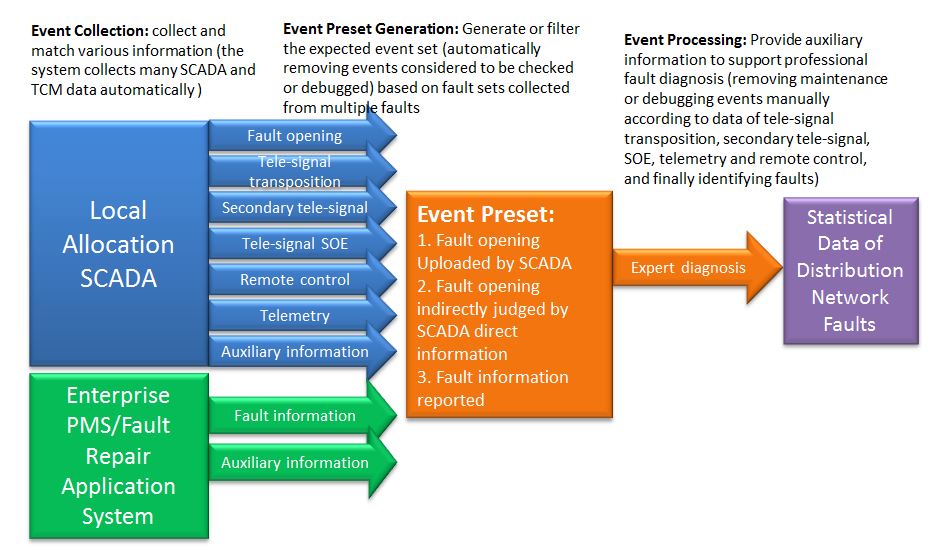
According to the multi-information intelligent fault judgment method of distribution network, the system creates fuzzy matching rules, to intelligently analyze the line fault detection, main transformer fault, bus fault, etc. In addition, for the links of distribution network tripping fault analysis, power outage analysis, fault analysis, engineering improvement and others, rectify the distribution network operation analysis system in the whole process. The dynamic evaluation system of large data distribution network operation status is developed by using various data such as configuration automation system (EMS/SCADA), fault maintenance system (PMS/TCM), which can objectively and accurately evaluate the operation status of distribution network.
1, Realize the video communication function of the emergency repair site and the control center, and carry out on-site monitoring or on-line expert consultation and other functions.
2, Collect field data such as task sheets, photos, voice and video files through mobile terminals, and give scene feedback timely, accurately and comprehensively.
3, Integrate various data to provide the basis for decision-making of command center.
 Electricity Consumption and Demand-side Management
Electricity Consumption and Demand-side Management This system synthesizes all kinds of users'power consumption information, compiles all kinds of power consumption information analysis algorithms and evaluates all dimensions of power consumption information, including industry power consumption trend analysis, power consumption and load forecasting, residential power consumption analysis, power impact model, economic correlation analysis, etc. The system covers all power customers, including large and medium-sized transformer users, low-voltage industrial and commercial users and resident users, public distribution transformer assessment and measurement points, and collects all kinds of power data, including power load data, power energy data, power quality data, working conditions data, event recording data, and so on.
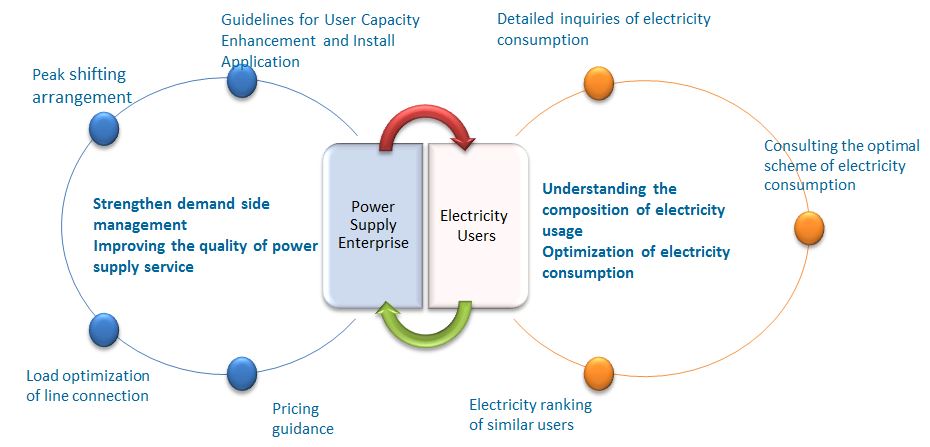
The system establishes a bidirectional interaction mechanism, which can effectively guide users to optimize electricity consumption. At the same time, users can actively initiate service requests and optimize power supply service mode.
 Green Power Management Platform
Green Power Management Platform The power green management platform mainly implements all-round monitoring and evaluation of the green characteristics of electric energy from the power mains side to the power grid side, and the result data is shared between government departments, electric energy production enterprises and the public, thus forming a green electric energy encouragement, supervision and publicity system. It includes four monitoring and supervision systems, such as environmental protection online monitoring, technical supervision of power plants involved in grids, online monitoring and analysis of coal consumption, and online monitoring of unit performance, and a green evaluation system.
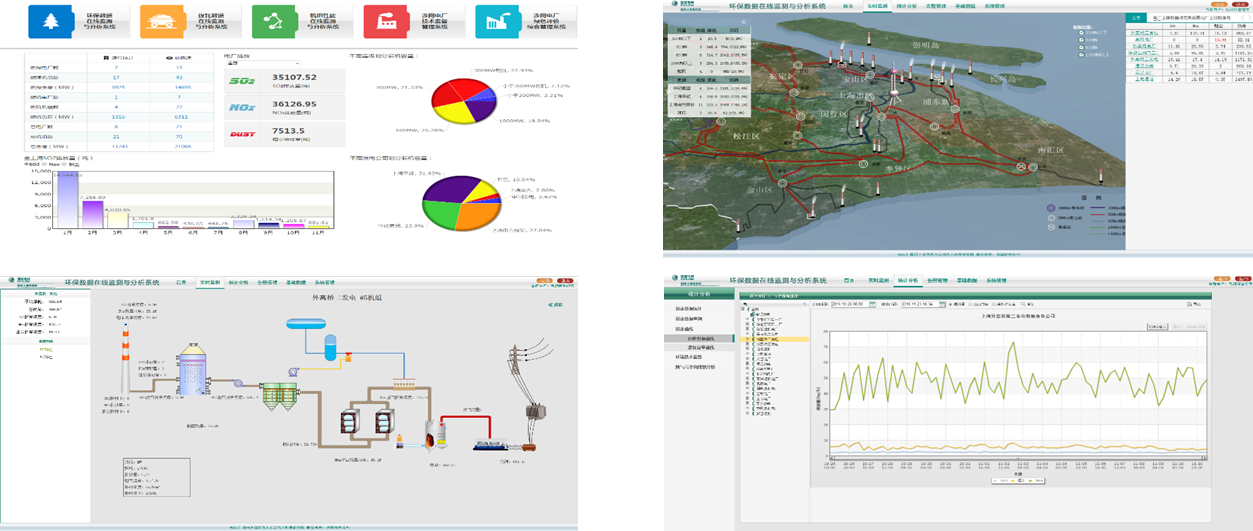
For example, photovoltaic power generation detection centralizes all photovoltaic power stations to a platform for centralized monitoring, realizes unified management of photovoltaic power stations, and real-time monitors relevant data of photovoltaic power stations, including basic information of power plants, power output, power quality related data, and comprehensively grasps the operation status of photovoltaic power stations.
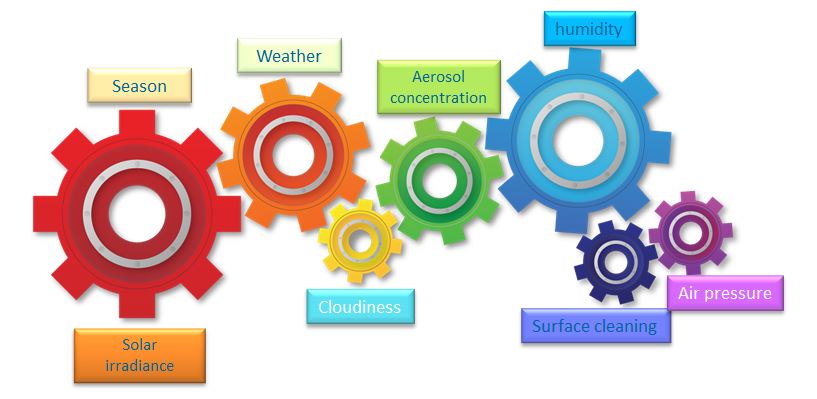
Luminous Power Forecasting: The output power of photovoltaic array is related to photoelectric conversion efficiency, photovoltaic array area, irradiation intensity and atmospheric temperature. Meteorological factors such as humidity, cloudiness and air pressure are the main influencing factors. The system establishes the basic photovoltaic cell model and photovoltaic conversion efficiency model, and obtains the formulas affecting photovoltaic conversion efficiency. The photovoltaic output power is predicted by reasonable empirical parameters and inputted solar irradiance values.